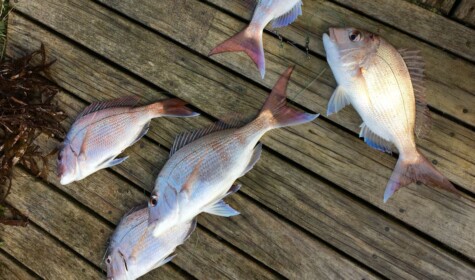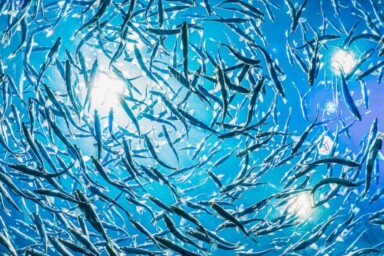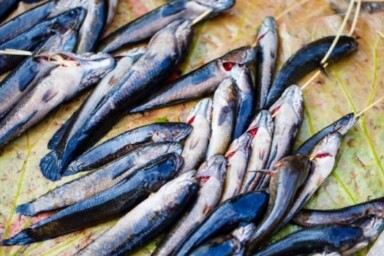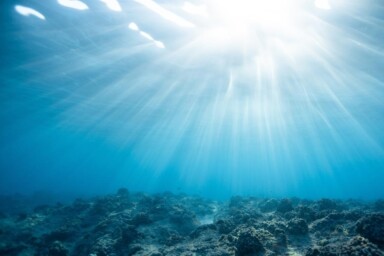The UK could be on the verge of a large increase in imports of New Zealand seafood, as British retailers and consumers reach for sustainable seafood alternatives in a post-Brexit world. However, the so-called “sustainability” of New Zealand seafood is actually far from what it’s bigged up to be.
New Zealand is often regarded as one of the world’s most sustainable fisheries, and held up as a gold standard for responsible fisheries management. The oft-revered Quota Management System (QMS), on which the fishing industry is based, has been touted by the New Zealand government as “the pearl of New Zealand fishing”. It is flashed about as a science-based, totally sustainable regulatory framework that has allowed the New Zealand seafood industry to remind the world, repeatedly, that they “needn’t worry about the health of New Zealand fish stocks”.
Except that…we really should.
New Zealand’s seafood economy
New Zealand may seem like a small, remote country. A few tiny dots at the bottom of the gigantic Pacific Ocean, populated by about half as many people as London. But in terms of ocean and fisheries, it’s actually huge.
Thanks to its long coastline and many islands, New Zealand has around the fourth-largest Exclusive Economic Zone (EEZ) in the world, encompassing over 4 million square kilometres (1.5 million square miles) of ocean. That is a lot of ocean to cover, and a lot of fish to catch. Furthermore, over 90% of New Zealand’s seafood is exported, with more than 250,000 tonnes accounting for around £1 billion in export revenue every year – and a bigger chunk of that could soon be coming to the UK.
Earlier this year, New Zealand and the United Kingdom finalised terms on a free trade agreement that will see significant reductions in import barriers and a removal of tariffs on many products, including seafood. The New Zealand seafood industry – still a bit bruised from the covid-induced exposure of its reliance on China as an export market – is already licking its lips at what this deal could mean for New Zealand seafood exports to the UK.
Part of that push is because, following the formalisation of Brexit and the gradual roll-out of changes in customs controls and trade regulations between the EU and UK, the UK has been targeted as a somewhat “emerging” market, one in which New Zealand seafood can capitalise on its “sustainable” image. According to Tim Pankhurst, former CEO of industry trade group Seafood New Zealand, “that sustainability stamp is an endorsement of our fisheries management, and it is already driving increased demand” overseas. A similar push is set to happen into Europe, with an even more lucrative NZ-EU free trade deal, finalised just a few months after the NZ-UK deal.
However, this may not be as big a win for sustainable seafood as people might think – or as companies might claim.
Sustainability concerns
To say that there have been concerns raised about the sustainability of the New Zealand fishing industry, is putting it very lightly. For years, the recklessly indiscriminate and destructive methods employed by New Zealand fishing companies – particularly regarding by-catch and the destruction of marine ecosystems from bottom trawling – have been criticised by everybody from McDonald’s and Waitrose to Greenpeace, the NZ Recreational Fishing Council and, most concerningly, the very government ministry that regulates the industry itself. It’s also routine for the shady dealings and behind-closed-doors politics, which go on between industry and government in New Zealand fisheries, to be exposed (including a high-profile case last year).
Still, despite all the bad press, New Zealand’s sustainability label still seems to sell. Both at home and overseas.
New Zealand’s three biggest seafood companies – Talley’s, Sanford and Sealord, who between them own about 60% of New Zealand’s total commercial fishing quota – all claim sustainability as a guiding principle, and proudly give strong reassurances on their websites, such as “100% of New Zealand’s commercial catch is from sustainable fish stocks”, “we are committed to a sustainable future”, and that “sustainability is a journey that we are all on together”. Similarly, the New Zealand government – despite ongoing petitions and pressure to revitalise depleted marine environments and ban bottom trawling – continues to fuel the narrative that the New Zealand seafood industry is sustainable, and that the QMS “supports sustainable fishing”.
For example, the latest report on the status of New Zealand’s fish stocks was released in February of this year, around the same time as the NZ-UK free trade agreement was signed. This report stated that “by far the majority of New Zealand’s fish stocks are performing well”. Since it came out, trade industry group Seafood New Zealand has been quick to dispatch articles and press releases to both overseas audiences and platforms at home, driving home the fact that “New Zealand fisheries and fish stocks [are] highly sustainable”.
However, just what exactly government and industry mean by “sustainable”, when you dig into it, is alarmingly different from what many consumers might assume.
Measuring sustainability
Forgetting about trawlers for a second, the stipulation for a fishery being deemed “sustainable” in New Zealand is guided by the Harvest Strategy Standard (HSS) plan (as enacted in law through the Fisheries Act 1996), under which the only real measure for sustainability is the abundance of a single fish stock. This abundance is measured against a species’ “natural”, or pre-depletion biomass levels (which typically means fish populations up until the 1970s-1980s). The legislation largely ignores any broader environmental impacts, such as marine ecosystem damage brought on by overfishing and industrial fishing methods.
The HSS has four ‘performance measures’ built into it. Of these, the ‘soft limit’ (for which the default figure is 20% of the natural biomass) is the key measure to determine whether a stock’s fishery is ‘sustainable’ or not. This means that any stock that is likely to remain at a biomass level above the soft limit, if current fishing levels are maintained, is deemed to have “no sustainability risks”.
To put it another way: as long as a fish stock seems ‘more likely than not’ to remain at about 20% of the population of what it was, say, 50 years ago, when it was deemed ‘unfished’, then things can go on as they are.
That’s a pretty low bar, but, it gets worse.
The fourth performance measure in the HSS is the overfishing threshold, which refers to a “rate of extraction” (i.e., how many fish are allowed to be caught) at which it is likely to cause stocks to diminish in the future. However, this measure in itself doesn’t necessitate any action in terms of reducing legal catch limits – at least not until the overfishing actually reduces stock numbers to below the soft limit.
Stock assessment
However, according to that February 2022 report – and despite the industry and government continuously waxing lyrical about the scientific data that forms the foundation of the QMS – only 67% of total stocks (by catch landed) could be assessed. That means that approximately one-third of all commercial catch landed in New Zealand, equating to about 150,000 tonnes – or an amount roughly similar to the total national fisheries production of such seafaring countries as Portugal and Finland – lacked sufficient data to be “scientifically evaluated”. This suggests that there are a lot of things going unsaid, and unchecked, in New Zealand fisheries.
Even worse, though, is perhaps what the report does say: in claiming that 85% of stocks (that were able to be assessed) have “no sustainability risks”, 15% of the stocks can be said to “have sustainability risks”. Unsurprisingly, when you delve into the 1,888-page Fisheries Assessment Plenary on which the report was based, these “unsustainable” stocks include the largest fisheries for some of New Zealand’s most important species, including snapper [p. 1551-2] and blue cod [p. 192]. Population declines and industry-induced vulnerability to the effects of climate change (p. 609) in New Zealand’s largest single fishery, hoki, are also mentioned.
To put those stocks “with sustainability risks” in monetary terms, the New Zealand seafood industry – which is worth more than £2 billion annually – can be said to have made approximately £120 million in profits last year by selling fish from stocks that, by their own admission, are probably being fished at unsustainable levels. To put this in perspective: £120 million is approximately ten times the amount that the entire industry pays in annual levies (£12 million) to fund the fisheries research upon which the system relies (a fact that the industry continues to bemoan).
It can be easy to get swept away by the sustainability story behind New Zealand seafood; and New Zealand does, luckily, have some small-scale operators pushing for things to be done in a more genuinely sustainable way. Overall, however, just like when selecting sustainable options from closer to home, it’s worth questioning where it actually comes from, and how it was caught.
For UK consumers over the coming years, that might mean thinking twice before lurching into the wide adoption of big New Zealand seafood imports.







